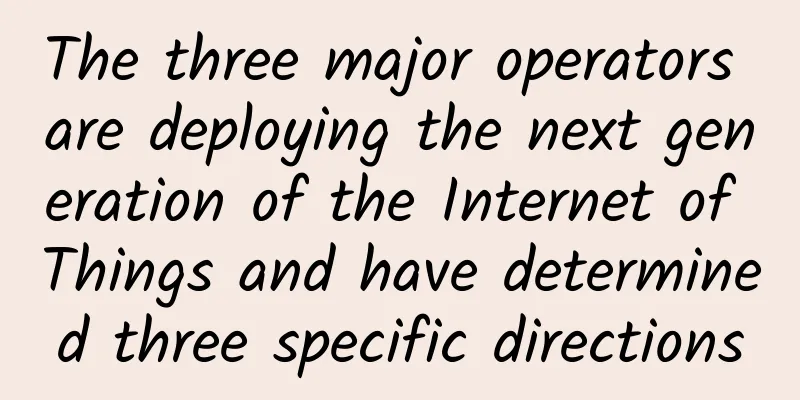We need to look up to the stars (6G) and keep our feet on the ground (5G)

|
2020 is coming to an end. With the advancement of 5G network construction and the freezing of 3GPP R16 version, more and more people are shifting their focus to 6G. On July 14, Samsung Electronics of South Korea released a white paper titled "Next Generation Hyperconnected Experience". In the white paper, Samsung estimates that the earliest time for the completion and commercialization of 6G standards is 2028, while large-scale commercialization may occur around 2030. This prediction time is very close to the prediction time given by ZTE at the second global 6G Wireless Summit on March 17: From the perspective of social and technological trends, 6G will have the following significant features:
From a service perspective, what will 6G bring? 6G will further enhance the features defined by 5G, such as eMBB, URLLC, and mMTC, and integrate more advanced sensing, imaging, display, and AI technologies to provide a hyper-connected experience, such as: Immersive Extended Reality (XR) High-fidelity mobile holograms Digital Mirror (Digital Twin) Requirements that 6G must meet To achieve a hyper-connected experience, 6G must meet requirements in three dimensions: performance, architecture, and trustworthiness. 6G performance requirements Compared with 5G, what performance improvements will 6G have? As shown below:
Draw it into a spider web model, roughly as follows: 6G Architecture Requirements Solve the problems caused by the limited computing power of mobile devices and achieve true integration of communication and computing so that various devices of end users can seamlessly utilize the computing power available in the network, such as introducing AI (or native AI) from the early stages of technology development. Flexible integration of new network capabilities, including integration with non-terrestrial networks such as aircraft, low-Earth orbit and geostationary orbit satellites, and high-altitude platforms. 6G credibility requirements Address security and privacy issues arising from the widespread use of user data and AI technology. Key technical development directions of 6G Some typical candidate technologies for 6G are as follows: Terahertz band (THz) 5G NR has begun to discuss operating in frequency bands above 52.6 GHz. Following this trend, mobile communications in the 6G era will inevitably use the terahertz (THz) frequency band. However, there are some technical challenges that must be overcome to actually use the THz band, such as: (1) The propagation characteristics of the THz spectrum (severe path loss and atmospheric absorption): It is necessary to establish a multipath channel model suitable for THz in indoor and outdoor scenarios. (2) Chips and RF devices: Over the past decade, researchers have been committed to developing chip-level terahertz technology, and some breakthroughs have been made in the lower THz frequency bands based on InP, GaAs, SiGe, and even CMOS technologies. However, further breakthroughs are needed in the higher THz frequency bands to meet the requirements of high efficiency, low energy consumption, and low cost. (3) Antennas and beamforming: Terahertz means a sharp increase in path loss. Therefore, a very large-scale antenna array is required to compensate for the path loss. On the other hand, this will result in a very narrow beam (similar to a laser beam), so it is also very important to optimize the beamforming to improve the performance of the system at a reasonable cost and energy efficiency. (4) New waveforms, signals, channels, and protocols: OFDM will still be a candidate, but new waveforms need to be explored to reduce PAPR and meet THz hardware limitations. In addition, appropriate signals, channels, and protocols need to be developed to effectively adapt to various THz operations. New antenna technology 5G NR already uses Massive MIMO technology, but the THz band requires more antennas than mmWave, so there will be greater challenges. Here are some options: (1) Metamaterial-based antennas and RF front-ends The first method: applying a metasurface lens as a phase-shifting structure to the antenna array signal and applying a DC bias to adjust the beam direction helps sharpen the beam shape. The second approach: The metamaterial antenna acts as a resonant antenna that radiates a directional beam by itself. Unlike the metasurface lens, it does not require a separate antenna array with phase shifters. The third method: Reconfigurable Smart Surface (RIS). In layman's terms, smart surfaces can change the electromagnetic properties of electromagnetic waves, thereby affecting the surrounding propagation environment. (2) Orbital angular momentum (OAM) In 1992, scientists confirmed through experiments that photons have the basic property of orbital angular momentum OAM. The core of OAM communication research is to use orbital angular momentum, an unused electromagnetic wave parameter, for communication. OAM is the characteristic of electromagnetic waves showing phase rotation in the vertical plane in the propagation direction. The number of phase rotations is called OAM mode. Different OAM modes are orthogonal to each other, and multiple orthogonal signals can be transmitted at the same frequency, thereby improving spectrum efficiency and channel capacity. This is OAM multiplexing technology: In May 2018, Japan's NTT successfully demonstrated 100Gbps wireless transmission for the first time in the world using orbital angular momentum (OAM) multiplexing. The laboratory designed OAM-MIMO multiplexing transmission. The results showed that the system can significantly increase transmission capacity. This technology seems to be quite promising, but the laboratory has only conducted a ten-meter transmission experiment, and there are definitely many problems that need to be solved in actual implementation and operation. Full-duplex technology 5G NR introduces dynamic TDD technology to improve duplex flexibility, so that the time slot ratio between downlink and uplink can be dynamically adjusted according to the traffic volume. Full-duplex technology may be used in 6G, thereby removing the limitations of traditional duplex mechanisms on the use of spectrum resources by transceivers, helping to further improve spectrum efficiency (theoretically, full-duplex at the same time and frequency can double the spectrum efficiency) and system flexibility. When uplink and downlink transmit signals at the same frequency at the same time, there will be serious self-interference and cross-interference problems, and certain interference suppression and elimination measures need to be taken during equipment and network deployment. Spectrum Sharing Technology In line with the idea of giving equal importance to increasing revenue and reducing costs, it is particularly important to make more effective use of existing spectrum resources (especially in low-frequency bands). Thus, Dynamic Spectrum Sharing (DSS) technology came into being. It allows networks of different standards to share the same spectrum resources, which is equivalent to decoupling the spectrum and the standard. For example, the current dynamic spectrum sharing technology can dynamically allocate spectrum between 4G and 5G. In the 6G era, dynamic spectrum sharing technology will obviously continue to develop on the original basis, and may be called "smart" spectrum sharing technology. The evolution of network topology A notable trend in the evolution of network topologies is the use of non-terrestrial networks (NTNs), such as satellites and HAPS, to provide coverage even in places where there are no terrestrial networks. The implementation of NTN technology requires consideration of new aspects that terrestrial networks do not have, including support for mobile cells, cells hundreds of kilometers long, large propagation delays, large Doppler shifts and large path losses caused by the high-speed movement of NTN, etc. We are still in the initial stage of developing technology to support NTN. 3GPP R17 will complete the first phase of support for NTN networks. Let us wait and see. PS: If you want to know more about NTN at this stage, it is recommended to refer to 3GPP TR38.811. AI Technology The 3GPP 5G standard has introduced the NWDAF network function in the core network to collect and analyze network data. I believe that this function will continue to evolve in subsequent versions, and 3GPP will also conduct related technical research on the wireless side. In the 6G era, the application of AI technology will be everywhere. For example, local AI technology provides a new solution for channel coding research, which no longer relies on traditional coding theory for design. Through learning, training, and searching, the best modulation and coding method suitable for the current transmission environment can be found. An example of joint AI is prediction-based switching optimization, while end-to-end AI can identify or predict anomalies in network operation and propose corrective solutions. Postscript: Is it too early to talk about 6G now? 5G commercialization is still in its infancy, so now is the right time to start preparing for 6G, because it usually takes about 10 years from the start of research to the commercialization of a new generation of communication technology. As early as March 2019, Finland held the world's first 6G Summit, where communications experts from various countries discussed and drafted the world's first 6G white paper: Key Drivers and Research Challenges of 6G Ubiquitous Wireless Intelligence. In the past year, countries around the world have formulated their own 6G development plans and put them into practice. ▲6G research progress in various countries around the world It was previously reported that the actual transmission rate of South Korea's 5G network is only three times that of 4G, far below the standard of 20 times. From this, it can be seen that the first priority worldwide is to fully stimulate the potential of 5G and let enterprises and individuals fully experience the real value brought by 5G. Otherwise, it is meaningless to talk about 6G in vain. If I were to sum it up in one sentence, it would be - We should look up to the stars (6G), but also keep our feet on the ground (5G) . |
<<: IDC: Global edge computing market will reach $250.6 billion in 2024
Recommend
10 questions to ask during TCP protocol interview
First show the mind map of this article TCP, as a...
SpeedyPage 10% off, starting from $4.83/month-AMD Ryzen, DDR5 memory, Gen4 NVMe, Ashburn computer room
SpeedyPage recently launched a high-performance V...
VMISS 30% off, Hong Kong CN2/Korea CN2/US CN2/Japan IIJ monthly payment starts from 3.5 Canadian dollars
VMISS is still offering a 30% discount this month...
Four types of network monitoring
Network monitoring can take many forms, depending...
IPv6, the savior of the Internet of Things industry?
On November 26, 2019, all IPv4 addresses were all...
From "eating meat" to "drinking soup": the difficult transformation of telecom operators
According to the established plan, the three majo...
How to unleash greater potential of new infrastructure
Recently, several domestic mobile communication o...
China Telecom's 5G base stations have covered more than 300 cities across the country
2020 is a critical year for 5G construction, and ...
DediPath July Promotion: 50% off all VPS/HybridServers/Dedicated Servers, multiple data centers in Los Angeles/San Jose, etc.
DediPath has released this month's promotion ...
Revitalizing smart cities with edge computing and 5G
[[381381]] As we recover from Covid-19, we have a...
What is the difference between localhost and 127.0.0.1? Do you know?
When front-end developers are debugging locally, ...
CUBECLOUD offers 12% off on all items, and CN2 GIA in Los Angeles and CN2 GIA in Hong Kong are available
CUBECLOUD has launched a promotion for Christmas ...
How to distinguish network cables? Eight steps to teach you how to choose network cables
Many people don't know how to distinguish net...
Understand how HTTPS works
HTTPS, also known as HTTP over TLS. The predecess...
5G standardization work encounters obstacles, and the launch of standards may be delayed
The high-speed 3GPP 5G standard work may encounte...


![[Black Friday] Summary: Yunding Internet/Megahertz Cloud/Fluorescent Cloud/Journey Cloud](/upload/images/67cac22bb5d03.webp)






